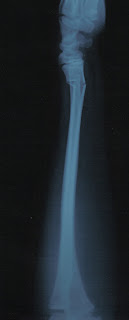Journal Club Summary
Methodology Score: 3/5
Usefulness Score: 4/5
CMAJ. 2010 Oct 5;182(14):1507-12.
This non-blinded, single-center RCT (N=96) of children aged 5-12 with minimally displaced or minimally angulated distal radius fractures, found that removable splinting was not inferior to short arm casting in terms of 6-week functional outcomes (mean Activities Scale for Kids score 92.8 vs. 91.4). While the authors asserted that splinting was inherently preferable to casting, the group questioned whether this study supported a benefit of splinting over casting from an institutional cost and patient comfort perspective.
By: Dr. George Mastoras
Epi Lesson – Equivalence or Non-Inferiority Trials
Most RCTs aim to determine whether one intervention is superior to another (superiority trials). Often a non-significant test of superiority is wrongly interpreted as proof of no difference between the two treatments. By contrast, equivalence trials aim to determine whether one (typically new) intervention is therapeutically similar to another (usually existing) treatment. A non-inferiority trial seeks to determine whether a new treatment is no worse than a reference treatment. Because proof of exact equality is impossible, a pre-stated margin of non-inferiority (delta) for the treatment effect in a primary patient outcome must be defined a priori. Equivalence trials are very similar, except that equivalence is defined as being within pre-stated a two-sided treatment effect. True (2-sided) equivalence therapeutic trials are rare.
By: Ian Stiell
